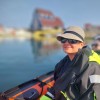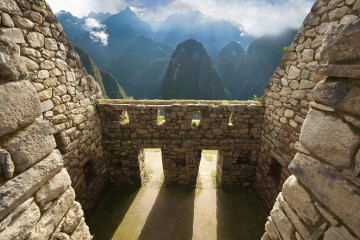The most celebrated national park in Patagonia is revered for being a hiker’s dream and is one of South America’s top 10 highlights. Aside from the startling mountainous landscapes, dotted with lakes, snow-capped granite peaks, glaciers and ridiculously picturesque valleys, Torres hides a cache of exceptional wildlife. Actually, it doesn’t even hide the creatures all that well, to be honest: this is one of the continent best wildlife-watching destinations, home to guanacos, foxes, pumas, Andean condors, flamingos and maras among its array of more than 500 distinct species which includes no-less than 15 birds of prey species. When visiting Torres del Paine, seeing wildlife is part of your everyday life. The only thing you have to do is just go for a walk.
Or, in our case, a leisurely drive.
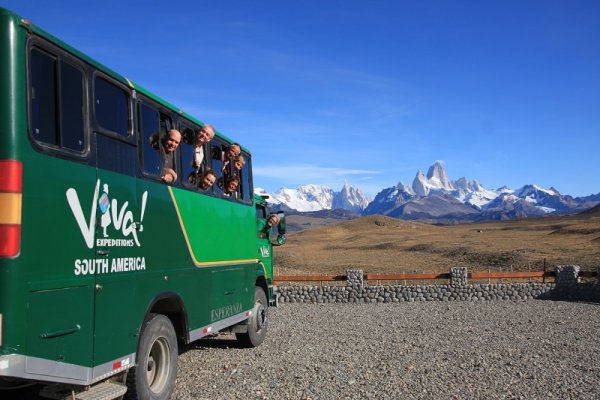
Viva overland truck tour in Patagonia
Click here to see our tours to Patagonia
Click the links below to skip through the article:
-
Where is Torres del Paine?
-
Opening times & entry fees
-
Top Activities
-
Trekking in Torres Del Paine
-
What you shouldn't miss
-
Best time to visit Torres del Paine
-
See all our Patagonia Tours
Where is Torres del Paine and how do you get there?
Explore more trips to Patagonia.
Torres del Paine National Park is in Chilean Patagonia, right between El Calafate (in the north) and Puerto Natales (in the south). It borders Los Glaciares National Park (home to the world-renowned Perito Moreno Glacier) and most travellers will combine visits to the two parks on Patagonia holidays, soaking up some of the region’s very best highlights. Whilst Torres del Paine is in Chile, Los Glaciares is on the other side of the border, in Argentina. Don’t let this worry you: Patagonia is a region that’s shared by the two nations and crossing back and forth (sometimes twice in a day) is a seamless and hassle-free affair.
The closest international airport is at El Calafate whilst Puerto Natales boasts a regional airport with flights connecting it to the Chilean capital, Santiago. For short Patagonia holidays, flying in and out to tour Torres del Paine is certainly convenient yet if you have more time you’ll want to plan for some overlanding excursions, once here. There is a lot to see in Patagonia, both in and around Torres del Paine, which is the prime reason small group tours of Patagonia are so popular.
See how much you can squeeze in on a 2-week Southern Explorer Tour

map of where Torres del Paine is in South America
Opening times & entry fees
Torres del Paine National Park is open for visitors all year long. At the time of writing, entry tickets cost about USD 30pp (USD 9 for children) during the high tourist season (October 1 – April 30) and USD 16pp (USD 1.50 for children) during the low season (May 1 and September 30). All our small group tours of Patagonia include entry fees to national parks.
During high season, scheduled public bus services depart from Puerto Natales twice a day (7.30am and 2.30pm) and return services leave the park at 1pm and 6pm. The ride takes 4 hours, each way. Do note that distances within the park (let alone outside of it) are extensive. Without private transport your visit will be heavily restricted to just a couple of hours’ walk from the main gates.
Top Activities
Trekking is the primary activity in Torres del Paine although the sheer number of options means the park attracts hard-core hikers and casual walkers in equal measure. You need not be an Olympic-level athlete to enjoy trekking here but if you are, you’ll certainly find plenty of exhilarating challenges. Most walking routes are designed to soak up the sight of the park’s crown jewel – the Cuernos del Paine peaks – from varying angles, all the while guiding you through an astonishing array of spectacular landscapes.
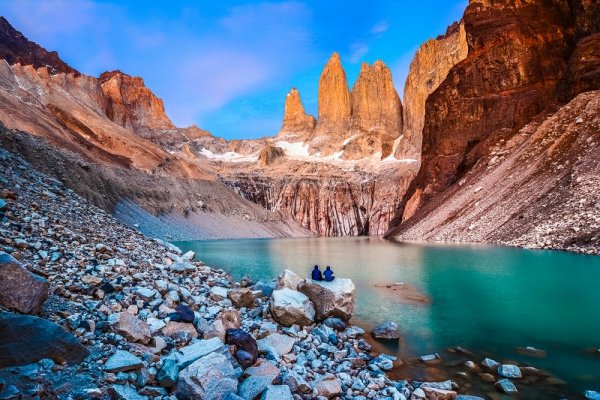
The view of the three towers at Torres del Paine
Click here to see our tours to Patagonia
Aside from hiking, Torres also offers sensational sailing on stunning glacial lakes, horseback riding, mountain biking and glacier walking. With plenty of traditional estancias, rustic hiking lodges and boutique hotels in which to stay, planning a multi-day visit in Torres del Paine is certainly easy and immensely rewarding.
When we visit Torres del Paine on our small group tours, we love to stay in a rustic hiking lodge for one night and spend a night in a gorgeous 3* hosteria which boasts an unrivalled location close to walking trails and offers simply superb views. This is about the only place that can get us out and ready to walk before dawn – the views from the hill above the hosteria is a magical place to watch the sunrise.
Trekking in Torres del Paine
For hardcore trekking enthusiasts:
The O Walk – Taking anywhere between a week and 10 days to complete, the 100km-long O Walk is the most challenging hiking option in Torres del Paine, incorporating the W Walk(detailed below) as well as a route across a high-altitude pass that offers arresting and all-encompassing views across the Patagonian Snow Field. This option is hard-core in several ways, least of all for the fact that you’ll need to free camp en-route as refugios, along with this route, are too few and far between. A tailor-made tour, incorporating this walk, is certainly doable and can include porters – either the 2-legged humankind or 4-legged horse kind.
The W Walk – A more popular option yet still arduous by all means, the 80km-long W-Walk is a 5-day adventure that takes in a hike around Grey Glacier, a tough but resplendent hike along the French Valley and ends on the sparkling Lake Pehoe, where you can take a half-hour boat ride that offers breath-taking views all-round.
For enjoyable walking experiences:
Mirador Las Torres Trek – The most popular daylong option is the trail that leads to the most famous viewpoint of all. This is the Torres of postcards and travel brochures and the whole trail showcases the best landscapes in the park. Only 8km long but arduous in parts, the Mirador Las Torres Trek necessitates a bit of rock scrambling. All up, it takes about 8 hours to complete this route.
But when you see it…
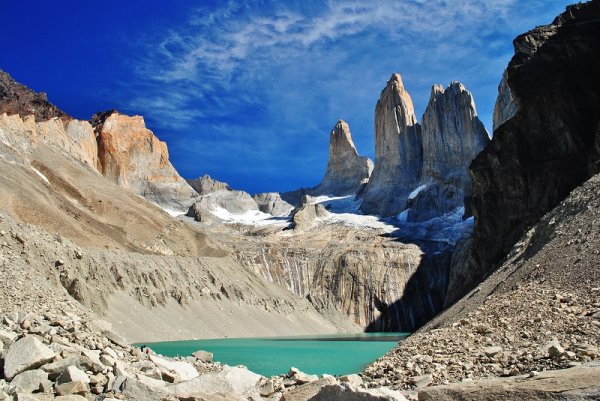
Mirador Las Torres Trek
Click here to see our tours to Torres del Paine
Grey Glacier & Lake – This 12km hike (6-7 hours) meanders along the shores of the glacial lake, offering astounding views the entire way. The final stretch to the Gardner Pass is steep and hard work yet the rewards are absolutely worth the effort.
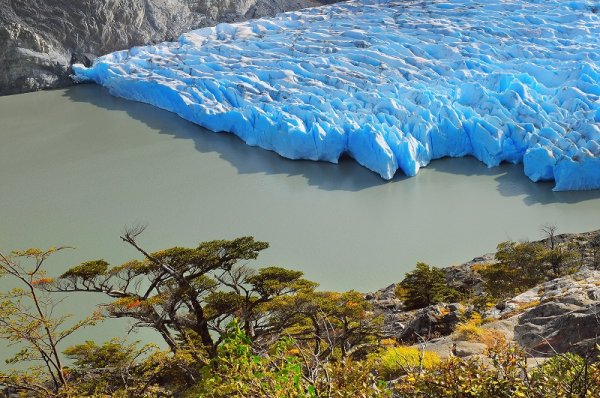
The view of Grey Glacier & Lake from above
Los Cuernos Trail – Another lakeshore trail, this time around Nordenskjöl Lake, one of Torres’ best highlights, is much gentler on the knees and meanders right between the sapphire lake and the vertiginous Towers, even passing a spectacular waterfall along the way and views of the highest peak in the park, Paine Grande, which stands at over 2,800m in altitude. This trail stretches for 11km and takes most people about 5-6 hours to complete.
Torres del Paine offers hikers a multitude of options for daylong walks. Given the altitude and terrain, all are perhaps harder than it may seem yet all perfectly doable, given enough time and decent levels of fitness. No matter your age or fitness level, however, do know that there are also options for reaching some viewpoints by car, leaving you with very little walking to do to soak up startling views. Torres del Paine is accessible to everyone and, no matter what compromises you need to make in order to enjoy it…enjoy it, you will.
Moreover, you’ll discover a multitude of other daylong hikes once you’re in Torres and, depending on where you stay, some which may even start directly from your hotel or refugio.
What you shouldn’t miss on a visit to Torres del Paine National Park
Torres del Paine has enough highlights to keep you enthralled for a few days yet Patagonia is rich in treasures, many of which are nearby and can easily be incorporated into a Patagonian holiday with a visit to the park.
El Chalten & Los Glaciares National Park - The obvious first choice of inclusions is El Chalten and Los Glaciers National Park, about 200km north of El Calafate. The hiking capital of Argentina, El Chalten is renowned for being the base point for trails to various viewpoints of Mt FitzRoy, one of the most picturesque peaks in all of Patagonia. El Chalten lies at the heart of Los Glaciares, home to arguably the most famous glacier on earth, Perito Moreno, as well as many others which are just as resplendent. This is an immensely active glacier, calving and evolving right before your eyes. Take a sightseeing boat ride across the lake and take your first tentative steps on the ice on a thrilling hike across the top.
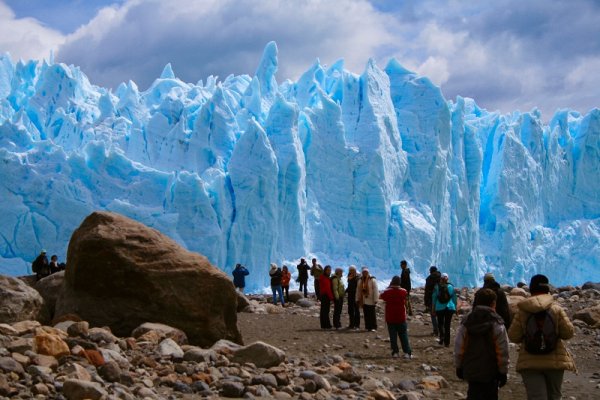
El Chalten & Los Glaciares National Park view point
Click here to see our tours to Patagonia
Tierra del Fuego – Well, you’ve come this far…what’s one more little boat trip?! Tierra del Fuego is that mesmerizing little island at the very tip of South America, reached by boat from Punta Arenas across the Strait of Magellan. The island’s capital, Ushuaia, is the springboard for cruises to Antarctica yet the whole island – which consists primarily of national park reserve – is a fantastic Patagonian highlight of its own accord. In Tierra del Fuego you’ll discover an incredible colony of King Penguins, you can cruise the Beagle Channel and see lazy seals sunbathing on rocky outcrops, take a longer cruise around the Patagonian Fjords, tackle some more hiking to glaciers and through pristine forests and indulge in the best culinary delights in all of Patagonia.
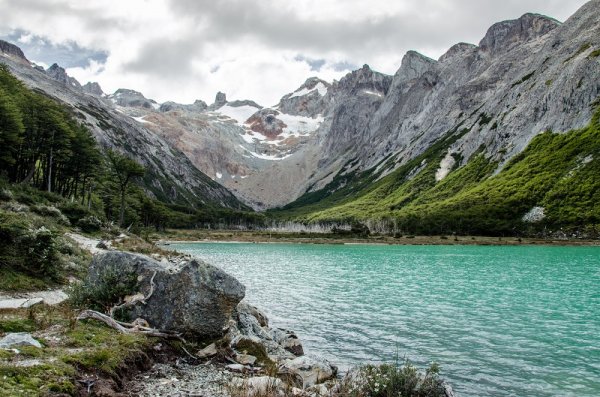
Tierra del Fuego fjords
Click here to see our tours to Tierra del Fuego
Best time to visit Torres del Paine – summer or winter?
Torres del Paine National Park is open all year long yet there are widespread closures of hiking trails during the bitterly cold, snowy winter. Peak travel season here is between October and April, when tall trails are cleared and open, wildlife abundantly active and landscapes lush. Having said that, do note that Patagonia is a land of absolute extremes, given to sporadic climate changes and impressive drops in temperature, even in the height of the Austral summer.
Here are the yearly averages for Torres del Paine:

Best time to go to Torres del Paine graph
Wind gusts and downpours are always a possibility in wild Patagonia, with the former coming in spectacular form. The winds of Patagonia are perhaps even more renowned than the wonders of Torres del Paine and cloud cover is an ever-present danger, especially threatening in a place that’s primarily all about views of sky-reaching peaks and sweeping horizons. Your best bet for viewing success in Torres del Paine, both for wildlife and landscapes, is not necessarily the month of the year you visit but rather the amount of time you dedicate to a visit. The more days at your disposal, the more chances you will have an absolutely perfect day for hiking in Torres del Paine.
Come and explore this marvellous part of the world with us on Patagonia Tours and discover just how many hidden secrets this South American region has to offer.
If you need help picking the right tour, Viva Expeditions has been travelling in Torres del Paine for over 10 years. Contact us for help picking the tour.
0800 131 900 or NZ (0064) 9 950 5918
Email info@vivaexpeditions.com
Laura Pattara
Laura Pattara writes for Viva Expeditions with a special love for all things Latin America. She had guided overland tours across the continent, reached Machu Picchu five times on foot, and even dressed up as a giant toucan for Carnaval. With a degree in languages and two decades of global travel experience behind her, Laura has a long-standing love for the Andes, soaring condors, and a truly delicious empanada.
|

